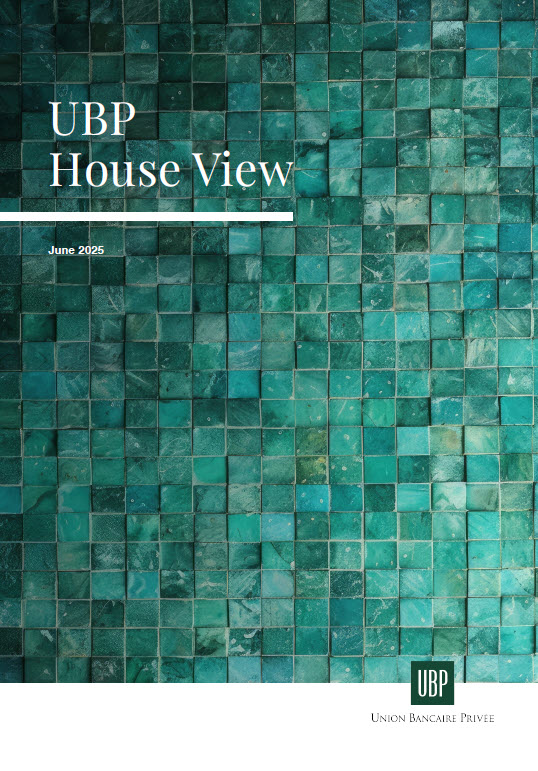As we enter the second half of the year, the fading trade war rhetoric is paving the way for a renewed focus on diversified asset allocations.
Key takeaways
- Receding recession risks enhance the appeal of high-yield bonds.
- Global defence is a notable area of interest due to earnings growth visibility.
- Rising US deficit and debt levels are fuelling pressure on interest rates.
- The erosion of the equity risk premium favours selectivity.
Back to basics
The first half of the year was a whirlwind whipped up by President Trump’s tariff agenda. However, it ended on a positive note in May, with markets rallying on signs of a trade-war de-escalation, notably between the US and China. Trade deals now appear to be a more plausible scenario.
Investor attention will gradually pivot back to leading indicators and corporate fundamentals. While we are steering clear of a recession for now, the macroeconomic damage of Trump’s policies still needs to be fully assessed.
Meanwhile, equity risk premiums are eroding amid high interest rates, and valuations remain elevated despite slowing corporate profit growth. This dynamic poses a real test for the sustainability of the US equity rally.
As a result, we are not counting on clear skies. In the wake of an exogenous shock driven by Trump, we are reverting to a diversified allocation approach, as all assets are meant to generate income while also being able to absorb market stress.
Shifting focus from tariffs to global fiscal policies
Though tariff policies captured market attention in April and May, market drivers should shift towards fiscal policies in the US, Germany/Europe, and China in the months ahead.
The first draft of the US ‘reconciliation’ bill in May – seeking to extend the 2017 Trump tax cuts and fulfil campaign promises – was released; it proposes expanding the US deficit further while adding as much as an additional USD 2.3 trillion in debt over the next decade.
In June, Germany’s new Merz-led government will begin the process of delivering on campaign promises of as much as EUR 1 trillion in defence spending and EUR 500 billion in infrastructure spending in an effort to reshape the nation.
Similarly, likely beginning in July, details of China’s latest Five-Year Plan should start to emerge ahead of its formal unveiling in October, potentially delivering the stimulus that markets have been awaiting since autumn 2024.
The May rebound in equity markets around the world partially reflects some of the effects of this coming fiscal spending round, which should only somewhat mitigate the downward pressure on growth that American tariff policies should have on global economies.
In contrast, bond markets are only beginning to price in this prospect with the renewed rise in long-dated bond yields around the world in late May. Investors should prepare for potential renewed bouts of interest rate volatility, as market uncertainty about US, European, and Chinese fiscal policy fades and meaningful fiscal stimulus is unveiled in the coming months, just as US inflation bottoms and sees the initial impacts of tariff policy put upward pressure on prices.
Such an environment should favour low-to-moderate-duration high-yield and hybrid credit strategies which are positioned to allow investors to capture attractive coupons while shielding portfolios from interest rate volatility, should it arise.
Read our June House View for more insights.
The opinions expressed herein are correct as at 6 June 2025 and are subject to change without notice. Any forecast, projection or target, where provided, is indicative only and is not guaranteed in any way.










